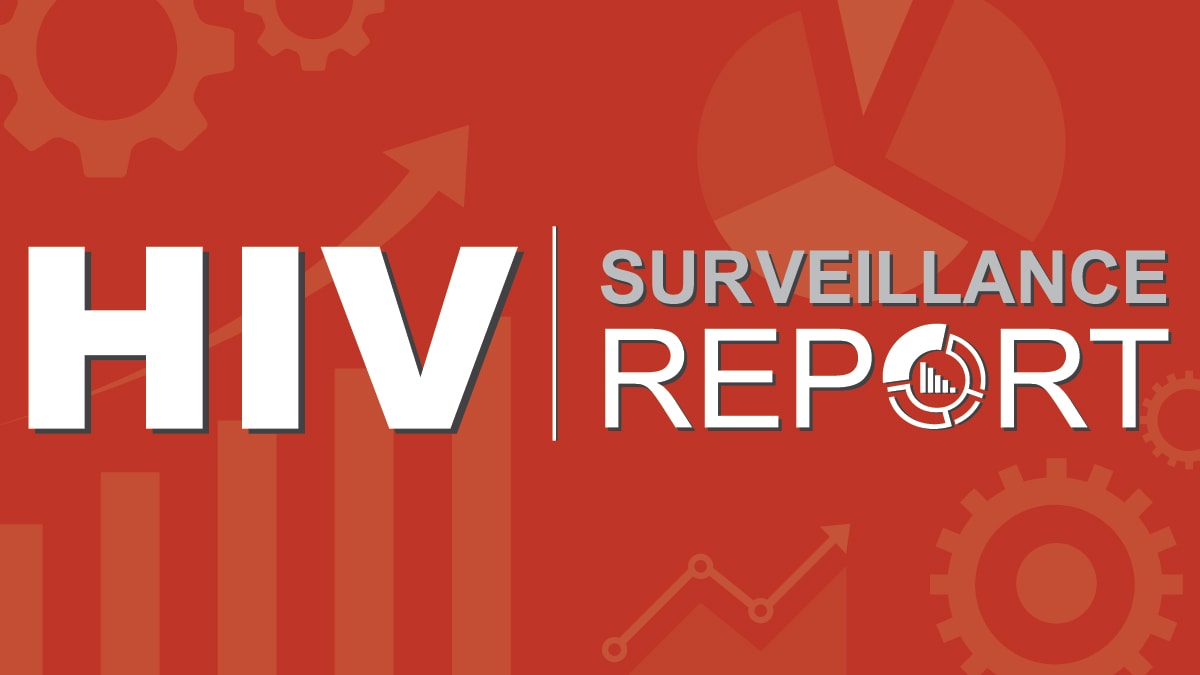At a glance
Progress in HIV prevention continues with estimated HIV infections declining 12% overall in 2022 compared with 2018, driven by a decrease (30%) among people aged 13 to 24. By transmission category, estimated infections attributed to male-to-male sexual contact decreased 10% and infections attributed to male-to-male sexual contact and injection drug use declined 27%. By race and ethnicity, Black/African American people experienced a substantial decrease (18%) in estimated infections. Furthermore, estimated infections fell 16% in the South.

Key findings
Estimated HIV infections in the United States over time, 2018-2022*

A change between 2018 and 2022 is assessed using a statistical test known as Z test for trend, with a P value of .05 used to determine if the difference is significant. Estimates for years 2020, 2021, and 2022 should be interpreted with caution.
*Among people aged 13 and older.
Estimated HIV infections by age, 2018-2022

A change between 2018 and 2022 is assessed using a statistical test known as Z test for trend, with a P value of .05 used to determine if the difference is significant.
* Estimate for 2022 should be used with caution due to lower reliability.
Estimated HIV infections by sex assigned at birth, 2018-2022*†

A change between 2018 and 2022 is assessed using a statistical test known as Z test for trend, with a P value of .05 used to determine if the difference is significant.
* Among people aged 13 and older.
† Based on sex assigned at birth. Data for gender are not provided because surveillance numbers for transgender people and people of additional gender identity are too small to produce reliable estimates.
Estimated HIV infections by transmission category, 2018-2022*†

A change between 2018 and 2022 is assessed using a statistical test known as Z test for trend, with a P value of .05 used to determine if the difference is significant.
* Among people aged 13 and older.
† Transmission category is classified based on a hierarchy of risk factors most likely responsible for HIV transmission. Classification is determined based on the person's sex assigned at birth. Data have been statistically adjusted to account for missing transmission category.
‡ Does not include infections attributed to male-to-male sexual contact and injection drug use.
Estimated HIV infections among gay and bisexual men by race and ethnicity, 2018-2022*†

A change between 2018 and 2022 is assessed using a statistical test known as Z test for trend, with a P value of .05 used to determine if the difference is significant.
* Among gay and bisexual men aged 13 and older.
† Data for Native Hawaiian and other Pacific Islander, American Indian/Alaska Native, and Asian gay and bisexual men are not included because surveillance numbers are too small to produce reliable estimates.
‡ Hispanic/Latino gay and bisexual men can be of any race.
Estimated HIV infections by race and ethnicity, 2018-2022*†

A change between 2018 and 2022 is assessed using a statistical test known as Z test for trend, with a P value of .05 used to determine if the difference is significant.
* Among people aged 13 and older.
† Data for Native Hawaiian and other Pacific Islander people are not included because surveillance numbers are too small to produce reliable estimates.
‡ Estimate for 2022 should be interpreted with caution.
** Hispanic/Latino people can be of any race.
Estimated HIV infections by region, 2018-2022*

A change between 2018 and 2022 is assessed using a statistical test known as Z test for trend, with a P value of .05 used to determine if the difference is significant.
* Among people aged 13 and older.
Knowledge of HIV status in the United States, 2022*

*Among people aged 13 and older.
Data releases
- Estimated HIV Incidence and Prevalence in the United States, 2018–2022
- Back Issues of Data Reports on CDC Stacks
- NCHHSTP Atlas Plus
Technical notes
Suggested citation
Centers for Disease Control and Prevention. Estimated HIV incidence and prevalence in the United States, 2018–2022. HIV Surveillance Supplemental Report, 2024; 29 (No.1).
About the data
This page provides an overview of estimates of HIV incidence (number of new HIV infections), prevalence (persons living with diagnosed or undiagnosed HIV infection), and percentage of diagnosed infections among persons living with HIV (knowledge of status) in the United States. These data are essential to determining whether HIV prevention program efforts are reducing HIV transmission and may be used to monitor progress toward U.S. national goals outlined in the National HIV/AIDS Strategy and the Ending the HIV Epidemic in the U.S. (EHE) initiative.
